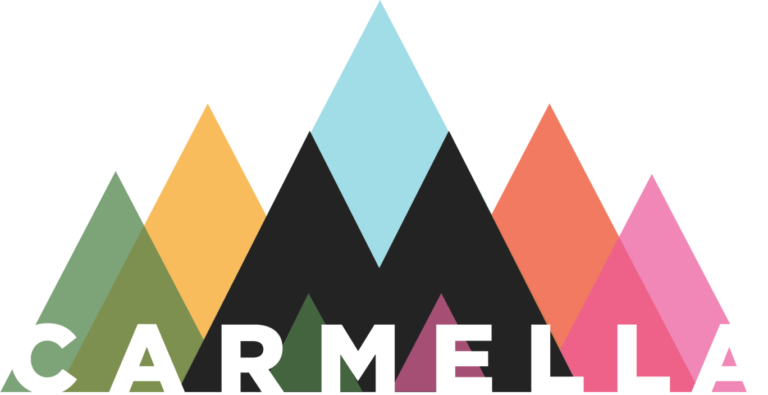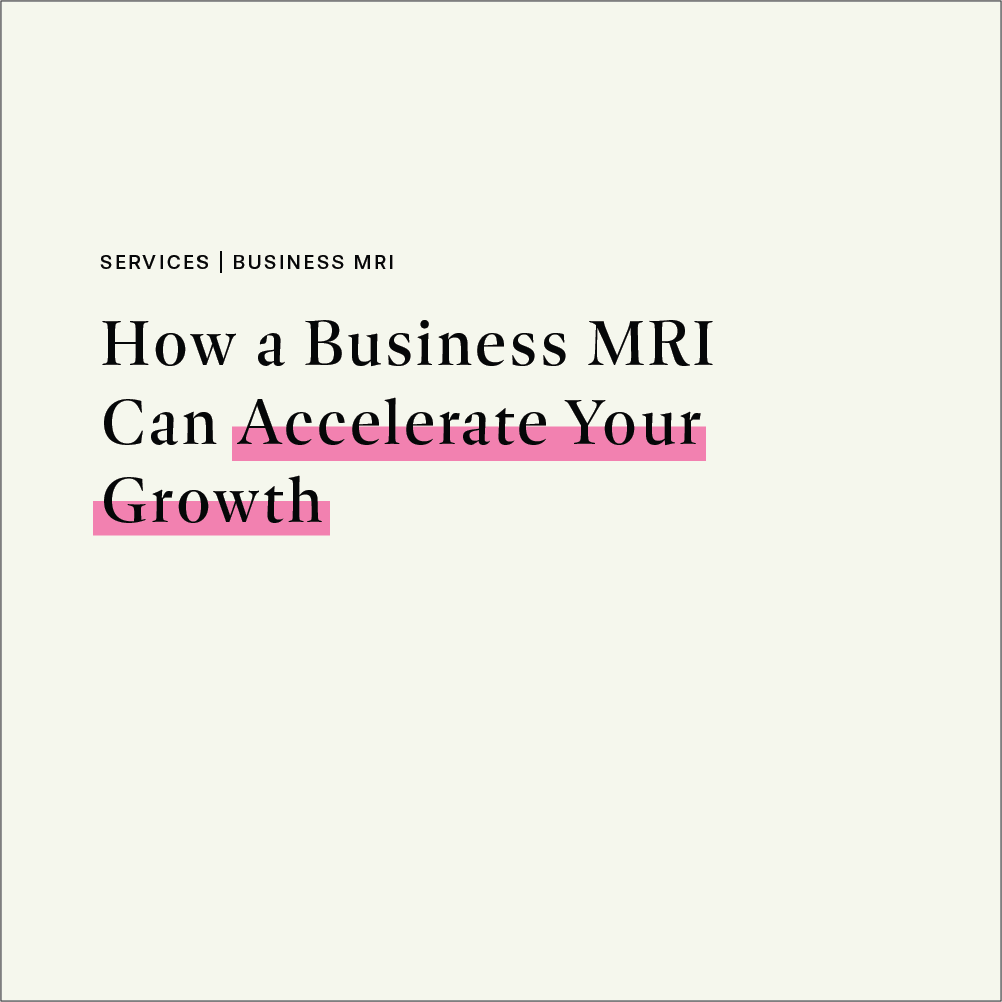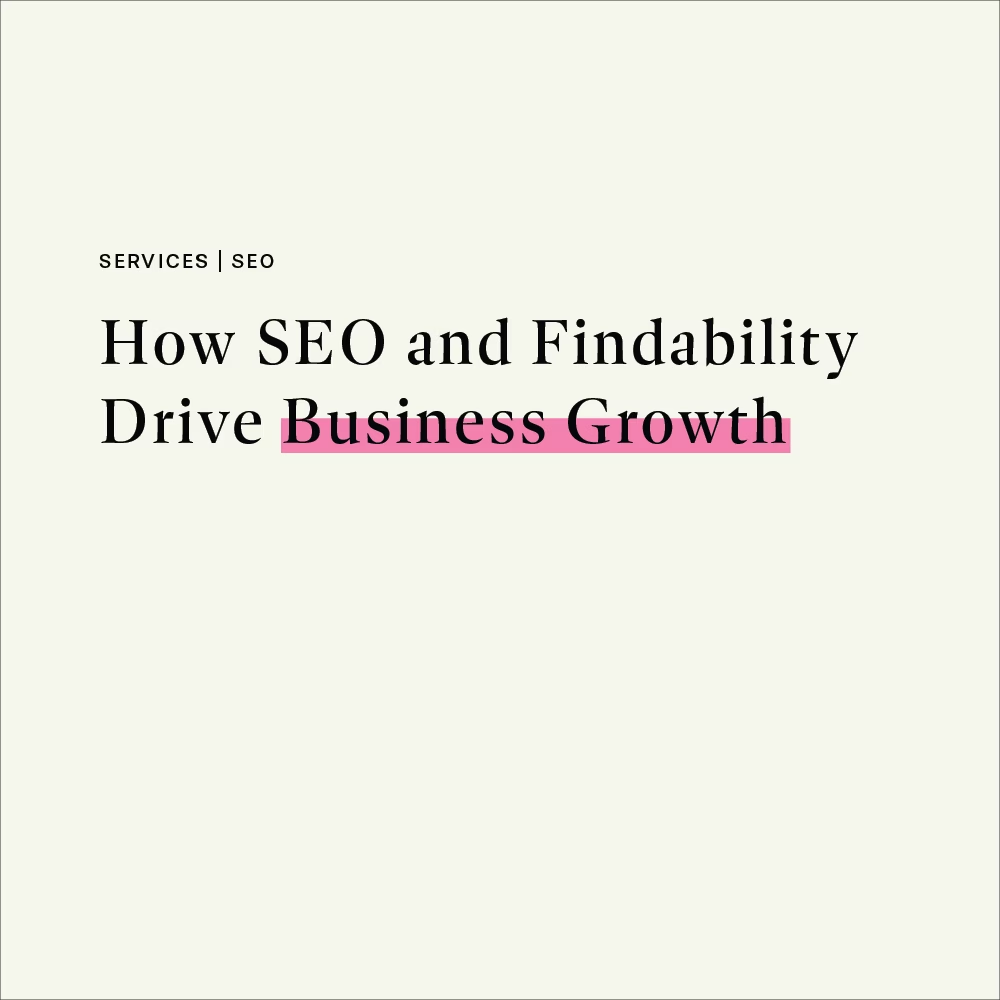
Outdoor Marketing Ideas: 10+ Awesome Marketing Tips, Ideas & Strategies to Grow Your Outdoor Company
[vc_row type=”full_width_background” full_screen_row_position=”middle” bg_color=”#ffffff” scene_position=”center” text_color=”dark” text_align=”left” overlay_strength=”0.3″ shape_divider_position=”bottom” bg_image_animation=”none” shape_type=””][vc_column column_padding=”no-extra-padding” column_padding_position=”all” background_color_opacity=”1″ background_hover_color_opacity=”1″ column_link_target=”_self” column_shadow=”none” column_border_radius=”none” width=”2/3″ tablet_width_inherit=”default” tablet_text_alignment=”default” phone_text_alignment=”default” column_border_width=”none” column_border_style=”solid” bg_image_animation=”none”][divider line_type=”No Line” custom_height=”40″][vc_column_text]
ARE YOU…
An adventure company struggling to carve out a market presence; a spa looking to compete in an increasingly competitive market place; selling online and can’t measure your ROI?
This is the outdoor marketing mix your adventure company needs to get results NOW.
In this quick 7 minute read you will learn the 5 critical tactics for outdoor/adventure, travel/tourism companies to spend resources on.[/vc_column_text][divider line_type=”No Line” custom_height=”40″][/vc_column][vc_column column_padding=”no-extra-padding” column_padding_position=”all” background_color_opacity=”1″ background_hover_color_opacity=”1″ column_link_target=”_self” column_shadow=”none” column_border_radius=”none” width=”1/3″ tablet_width_inherit=”default” tablet_text_alignment=”default” phone_text_alignment=”default” column_border_width=”none” column_border_style=”solid” bg_image_animation=”none”][divider line_type=”No Line” custom_height=”90″][image_with_animation image_url=”7071″ alignment=”” animation=”Fade In” border_radius=”none” box_shadow=”none” max_width=”100%”][/vc_column][/vc_row][vc_row type=”full_width_background” full_screen_row_position=”middle” bg_color=”#ffffff” scene_position=”center” text_color=”dark” text_align=”left” overlay_strength=”0.3″ shape_divider_position=”bottom” bg_image_animation=”none” shape_type=””][vc_column column_padding=”no-extra-padding” column_padding_position=”all” background_color_opacity=”1″ background_hover_color_opacity=”1″ column_link_target=”_self” column_shadow=”none” column_border_radius=”none” width=”1/1″ tablet_width_inherit=”default” tablet_text_alignment=”default” phone_text_alignment=”default” column_border_width=”none” column_border_style=”solid” bg_image_animation=”none”][divider line_type=”No Line” custom_height=”80″][image_with_animation alignment=”” animation=”Fade In” border_radius=”none” box_shadow=”none” max_width=”100%”][divider line_type=”No Line” custom_height=”20″][vc_column_text]
Outdoor Marketing: The Path to Purchase
[/vc_column_text][vc_column_text]The path to purchase isn’t always clear cut. Oftentimes a buyer will be served an advertisement in social media, investigate that offer and then head out on their own to research the product. Research includes reviewing the offer on the website directly, reviewing what’s available, or to see if it’s cheaper and comparable on other big e-comm sites like Amazon, and finally checking out social media to determine your social good, your sustainability practices and the individuals behind the company. It is more than likely that a distraction will pop up and pull the individual away from their path to purchase regardless of their intentions.
Bringing them back to the funnel, whether it’s with another ad, reminder email or re-targeting, an additional effort is needed. For one of our clients, an abandon cart email had a 36% conversion rate (Check out the case study here).
The buyer often likes what they saw, but can’t find the Facebook or Google ad anymore, so they are forced to look for your brand online; they head to Google. They then complete a search with simple keywords. If that doesn’t turn up any results they might try again and lengthen their keywords to be more specific.[/vc_column_text][divider line_type=”No Line” custom_height=”20″][image_with_animation image_url=”7082″ alignment=”center” animation=”Fade In” border_radius=”none” box_shadow=”none” max_width=”75%”][divider line_type=”No Line” custom_height=”20″][/vc_column][/vc_row][vc_row type=”full_width_background” full_screen_row_position=”middle” bg_color=”#faedef” scene_position=”center” text_color=”dark” text_align=”left” overlay_strength=”0.3″ shape_divider_position=”bottom” bg_image_animation=”none” shape_type=””][vc_column column_padding=”no-extra-padding” column_padding_position=”all” background_color_opacity=”1″ background_hover_color_opacity=”1″ column_link_target=”_self” column_shadow=”none” column_border_radius=”none” width=”1/1″ tablet_width_inherit=”default” tablet_text_alignment=”default” phone_text_alignment=”default” column_border_width=”none” column_border_style=”solid” bg_image_animation=”none”][divider line_type=”No Line” custom_height=”40″][vc_column_text]
Outdoor Marketing Idea: Google Search
[/vc_column_text][vc_column_text]Hopefully, your business turns up in organic search for the user, you have a Google Knowledge Panel completed, and you have been posting weekly. The Google Knowledge Panel is important because it will show your business location, hours, Google reviews, and additional information!
The Knowledge Panel is part of Google’s effort to control more of the online ecosystem. The more information Google can provide to consumers, the more time consumers will spend on Google. The ultimate goal of including these additional features for Google is to serve as the one-stop-shop for all online consumers.
Find out how to customize Google My Business to drive 30% of your website traffic.
How is Google My Business affecting your search results?
Local results appear for people who search for businesses and places near their location. They’re shown in a number of places across Maps and Search. For example, you’ll probably see local results if you search for “Italian restaurant” from your mobile device. Google will try to show you the kind of nearby restaurant that you’d like to visit.
How Google sources business information:
There are 4 main sources of information that you may find in your business listing:
- You: Information you’ve added about your business. You can add, edit, and remove this information as it changes to keep customers up to date and showcase your products and services.
- Your website: Information from your business’s official website.
- Users: Information from people who use Google services. Google gets a wide variety of information about businesses from its users. This user-generated information includes reviews, popular times, and photos. Your Business Profile is updated when someone takes an action like leaving a review, uploading a photo, or reporting a problem.
- Third-party sources: Information from other places online. If Google finds information about your business that could be helpful to customers, it may be added to your listing. This can include links to restaurant menus, social profiles, hotel amenities, or booking/ticketing availability.
Can’t find your business? Improve your info.
You may find that your business doesn’t appear for relevant searches in your area. To maximize how often your customers see your business in local search results, complete the following tasks in Google My Business. Providing and updating business information in Google My Business can help your business’s local ranking on Google and enhance your presence in Search and Maps.
Enter complete data
Local results favour the most relevant results for each search, and businesses with complete and accurate information are easier to match with the right searches. Make sure that you’ve entered all of your business information in Google My Business, so customers know more about what you do, where you are, and when they can visit you. Provide information like (but not limited to) your physical address, phone number, category, and attributes. Make sure to keep this information updated as your business changes. Learn how to edit your business information
Verify your location(s)
Verify your business locations to give them the best opportunity to appear for users across Google products, like Maps and Search. Learn more about verification
Keep your hours accurate
Entering and updating your opening hours, including special hours for holidays and special events, lets potential customers know when you’re available and gives them confidence that when they travel to your location, it will be open. Learn how to edit your hours
Manage and respond to reviews
Interact with customers by responding to reviews that they leave about your business. Responding to reviews shows that you value your customers and the feedback that they leave about your business. High-quality, positive reviews from your customers will improve your business’s visibility and increase the likelihood that a potential customer will visit your location. Encourage customers to leave feedback by creating a link they can click to write reviews.
When replying to a positive review, make sure to use your companies name. When replying to a negative review leave that important keyword out.
Add photos
Adding photos to your listings shows people your goods and services, and can help you tell the story of your business. Accurate and appealing pictures may also show potential customers that your business offers what they’re searching for.
How Google determines local ranking
Local results are based primarily on relevance, distance, and prominence. These factors are combined to help find the best match for your search. For example, Google algorithms might decide that a business that’s farther away from your location is more likely to have what you’re looking for than a business that’s closer, and therefore rank it higher in local results.
Relevance
Relevance refers to how well a local listing matches what someone is searching for. Adding complete and detailed business information can help Google better understand your business and match your listing to relevant searches.
Distance
Just like it sounds–how far is each potential search result from the location term used in a search? If a user doesn’t specify a location in their search, Google will calculate distance based on what’s known about their location.
Prominence
Prominence refers to how well-known a business is. Some places are more prominent in the offline world, and search results try to reflect this in local ranking. For example, famous museums, landmark hotels, or well-known store brands that are familiar to many people are also likely to be prominent in local search results.
Prominence is also based on information that Google has about a business from across the web (like links, articles, and directories). Google review count and score are factored into local search ranking: more reviews and positive ratings will probably improve a business’s local ranking. Your position in web results is also a factor, so SEO best practices also apply to local search optimization.
There’s no way to request or pay for a better local ranking on Google. We do our best to keep the details of the search algorithm confidential to make the ranking system as fair as possible for everyone.
What is the Google Knowledge Panel?
The Knowledge Panel is the box on the right side of the Google search results page that contains information about a business location or brand. It generally appears when people search for a specific business by name, and it’s intended to help consumers quickly see relevant information such as business hours, contact information, location, and reviews.
For local businesses, the Knowledge Panel is yet another local listing to pay attention to in addition to pages on Facebook, Yelp, and other review sites. Thanks to the Knowledge Panel, consumers don’t have to visit your website to learn about your business; they can get all of the information from the search results page. It’s up to you, as a business owner, to control and update this information.
Branded Google Knowledge Panel
There’s another type of Knowledge Panel. The Branded Google Knowledge Panels. Branded Knowledge Panels show information about large corporations rather than individual business locations. For a large multi-location franchise business, the information displayed might include:
- CEO
- Date Founded
- Stock Price
- Location of Headquarters
- Number of Locations
- Number of Employees
- Customer Service Number
Google Q&A
Google Q&A displays crowdsourced questions and answers in the Knowledge Panel along with your business information. People can ask things like, “does this restaurant have WiFi?” or “is this store open on Sundays?” Answers are then provided by either the business owner or other consumers. In addition to affecting public perception of your business, Google Q&A can actually impact your SEO ranking. It’s been shown that Google crawls these questions and answers for keywords when determining where your business ranks in search results.
In fact, 20% of Google searches on mobile or Android devices are now conducted via voice search. And what’s more, search engine algorithms are getting smarter, and using machine-learning technology, now, when searchers ask questions or input keywords, search engines can interpret the meaning of terms to try to find the best possible answer.
Google Reviews
As for GMB Reviews, the best strategy is to respond to every review. These reviews populate at the bottom of the Knowledge Panel where they’ll be accompanied by any responses that you provide. Research has shown that 89 percent of customers express a willingness to change a negative review depending on how the business responds, which is why review response is such a critical aspect of improving your business’ online reputation. Having a negative review on your Knowledge Panel isn’t the end of the world – in fact, it’s an opportunity to turn a disgruntled customer into a brand ambassador.
How to get more 5 star reviews?
Using software to prompt customers immediately after they have had an experience with you to leave a Google, Trip Advisor or Facebook Review. The software will ask for the review and if the customer leaves less than a 4 or 5 star review, the review is driven to an off-site dashboard, where you have a chance to turn your negative review into a customer service issue and deal with it. This does not prevent someone from going directly to your page and leaving a review but it will help with getting more 4 and 5 star reviews. Google reviews are 30% of your search engine ranking, so it’s time to get started![/vc_column_text][divider line_type=”No Line” custom_height=”90″][/vc_column][/vc_row][vc_row type=”full_width_background” full_screen_row_position=”middle” bg_color=”#ffffff” scene_position=”center” text_color=”dark” text_align=”left” overlay_strength=”0.3″ shape_divider_position=”bottom” bg_image_animation=”none” shape_type=””][vc_column column_padding=”no-extra-padding” column_padding_position=”all” background_color_opacity=”1″ background_hover_color_opacity=”1″ column_link_target=”_self” column_shadow=”none” column_border_radius=”none” width=”1/1″ tablet_width_inherit=”default” tablet_text_alignment=”default” phone_text_alignment=”default” column_border_width=”none” column_border_style=”solid” bg_image_animation=”none”][divider line_type=”No Line”][image_with_animation image_url=”7085″ alignment=”center” animation=”Fade In” border_radius=”none” box_shadow=”none” max_width=”100%”][divider line_type=”No Line”][vc_column_text]
Put on your Storytelling Hat
[/vc_column_text][vc_column_text]Storytelling is a craft. Not a process, method, or technique. Storytelling is described as an art– the “art” of storytelling– and like art, it requires creativity, vision, skill, and practice. Storytelling isn’t something you can grasp in one sitting or after one course. It’s a trial-and-error process of mastery.
Storytelling is the process of using fact and narrative to communicate something to your audience. Some stories are factual, and some are embellished or improvised in order to better explain the core message.
Telling a story is like painting a picture with words. While everyone can tell a story, certain people fine-tune their storytelling skills and become a storyteller on behalf of their organization, brand, or business. In a world divided by a multitude of things, stories bring people together and create a sense of community.
Stories help solidify complex concepts and simplify messages. Taking a lofty, non-tangible concept and creating a relatable story is one of the biggest strengths of storytelling in business.
Stories make us human, and the same goes for brands. When brands get transparent and authentic, it brings them down-to-earth and helps consumers connect with them and the people behind them.
Snackable™ Storytelling
If you’re not already, you should be creating video to pair with your digital marketing efforts. All marketers know that content is king; moreover, all digital marketers know that video content is king when it comes to advertising and social media. It is no longer just one piece of your overall marketing plan — it is central to your campaign efforts, especially your social media strategy!
Video is dominating social, which means if you are not creating video you’re likely falling way behind your competitors. According to a report from HubSpot Research, more than 50% of consumers want to see videos from brands… more than any other type of content. Video is useful for more than just entertainment; it has revolutionized how businesses connect and convert leads and how service teams support their customers, making video useful for the entire acquisition process, not just brand awareness. Your brand can utilize many different types of video from demos to branding, through events and education, and all the way to animations and live footage. Think about the creation of Youtube, Vimeo, Vines, TikTok and now IG Reels. The reason all these platforms do so well is one common denominator: VIDEO!
Brand storytelling is sharing a compilation of the feelings, relationships, and attributes of your brand. From idea to implementation, successful organizations strategize to build a storytelling infrastructure and take their digital audience members on a people-centric journey.
Find out how to tell great stories and write blogs that people want to read.
Know your audience
Who wants to hear your story? Who will benefit and respond the strongest? In order to create a compelling story, you need to understand your readers and who will respond and take action. Sharing unique stories is a two-way conversation, not a political monologue. Transition your content messaging tone, voice, and strategy from organization-centric to audience-centric.
Remember to avoid industry jargon whenever possible. Instead, swap out those terms with more consumer-friendly language.
Good content that solves a problem, answers a question, or entertains visitors will be shared more often than boring content that is not unique. Consider the “what’s in it for the audience” angle when you prepare content. Why should a person outside your organization read, watch, or listen to your content?
What will the audience take-away from your story?
Whether your story is one page or twenty, ten minutes or sixty, it should have a core message. Like the foundation of a home, it must be established before moving forward.
Tell authentic stories that resonate with your ideal client and tug at heart strings. Not all stories are created equal. To determine what kind of story you’re telling, figure out how you want your audience to feel or react as they read.
Every great story has X components:
- A beginning, middle, and end
- Appropriate spelling, grammar, and punctuation
- Character Development. Every story features at least one character, and this character will be the key to relating your audience back to the story. This component is the bridge between you, the storyteller, and the audience. If your audience can put themselves in your character’s shoes, they’ll be more likely to follow through with your call-to-action.
- Conflict. The conflict is the lesson of how the character overcomes a challenge. Conflict in your story elicits emotions and connects the audience through relatable experiences. When telling stories, the power lies in what you’re conveying and teaching. If there’s no conflict in your story, it’s likely not a story.
- A point or takeaway.
- Resolution. Every good story has a closing, but it doesn’t always have to be a good one. Your story’s resolution should wrap up the story, provide context around the characters and conflict(s), and leave your audience with a call-to-action.
Blogging for 2021
The key takeaway? Be helpful.
Share knowledge without expectation. Search has changed, and we are telling you again. Don’t worry about keywords and links in the beginning, add those later.
Know your audience and create persona for those individuals.
Google says, ‘By creating a blog that is of value, you can attract an audience and eventually convert them to customers, partners, friends, or otherwise. Having a blog and writing about important topics that are relevant to your audience establishes yourself as an authority in the space. It enhances your professional image.’
But that’s not the reason to spend 4-6 hours researching and writing a blog.
If you’re just starting out, Hubspot has a successful blogging guide but we want to suggest a complex strategy that will get results faster. We love the Pillar-Cluster Content Blogging Strategy when paired with a landing page.[/vc_column_text][divider line_type=”No Line” custom_height=”40″][/vc_column][/vc_row][vc_row type=”full_width_background” full_screen_row_position=”middle” scene_position=”center” text_color=”dark” text_align=”left” overlay_strength=”0.3″ shape_divider_position=”bottom” bg_image_animation=”none” shape_type=””][vc_column column_padding=”no-extra-padding” column_padding_position=”all” background_color_opacity=”1″ background_hover_color_opacity=”1″ column_link_target=”_self” column_shadow=”none” column_border_radius=”none” width=”1/1″ tablet_width_inherit=”default” tablet_text_alignment=”default” phone_text_alignment=”default” column_border_width=”none” column_border_style=”solid” bg_image_animation=”none”][divider line_type=”No Line” custom_height=”40″][vc_column_text]
Pillar Content for your Website
[/vc_column_text][vc_column_text]Think about topics you want to own, not just keywords!
Pillar content is based off your business units and the keywords that your ideal client is using when searching for you. You probably need to conduct some keyword research to find out what keywords you are currently ranking for that you want to rank for and which ones you don’t want to rank for. Yes, it is possible to rank for keywords that you don’t want to rank for. Once you’ve conducted your keyword research, choose the keywords related to your topic that have the highest search volume. Then, determine if you’ve already written a blog post about that keyword, or if you need to write a new blog post. We have 3 blog posts called Instagram Tips and Tricks since they are updating their algorithm so frequently, we ranked these posts on the highest-ranking URL, and redirected the other blog posts towards it.
Marketmuse does a really slick job of analyzing your current content and your gaps.
A pillar content page covers the topic thoroughly and broadly, so a visitor could answer any basic questions about the topic. It shouldn’t delve too deeply into answering specific questions — that’s what blog posts are for.
Cluster Content
As you write more blogs on the same pillar think about how to go deeper on each consecutive blog to establish your brand as an authority and to improve your website user experience. Unlike the pillar page, which centres around a specific topic, each of these content focus on a targeted keyword related to the topic you want to rank. They also contain a text link that brings your reader back to the pillar page (hence the name).
Establish your brand as an authority
92% of people say that they prefer and value content published by brands considered an authority in their niche and industry. They are also more willing to trust you and your recommendations, even if the products you’re recommending are yours.[/vc_column_text][divider line_type=”No Line” custom_height=”40″][image_with_animation image_url=”7086″ alignment=”center” animation=”Fade In” border_radius=”none” box_shadow=”none” max_width=”100%”][divider line_type=”No Line” custom_height=”40″][/vc_column][/vc_row][vc_row type=”in_container” full_screen_row_position=”middle” scene_position=”center” text_color=”dark” text_align=”left” overlay_strength=”0.3″ shape_divider_position=”bottom” bg_image_animation=”none”][vc_column column_padding=”no-extra-padding” column_padding_position=”all” background_color_opacity=”1″ background_hover_color_opacity=”1″ column_link_target=”_self” column_shadow=”none” column_border_radius=”none” width=”1/1″ tablet_width_inherit=”default” tablet_text_alignment=”default” phone_text_alignment=”default” column_border_width=”none” column_border_style=”solid” bg_image_animation=”none”][divider line_type=”No Line”][vc_column_text]
Improve your Website’s User Experience
[/vc_column_text][vc_column_text]Our old structure was quite disorganized when it comes to our content, we have three or more people writing blogs and contributing to our culture of sharing knowledge without expection. This makes it difficult for your visitors to move laterally through your site and may ultimately cause them to leave. It can also cause you to create multiple versions of the piece of content, which means a waste of time and effort on the part of your content marketing team.
Using the topic cluster model helps you organize and link together related pieces of content to each other and help find that content more quickly. Initial results show, users spend more time on your site (another factor to help boost your rankings). More important, they are more educated and enlightened about your product, making it even easier for you to convert them into customers.
Landing Page
The landing page should have one goal; conversion. That conversion can be a trade of an email address for a downloadable PDF, a newsletter sign-up or a purchase.
Flowww has developed the simplest best landing page we’ve see yet. Everything that goes on your landing page should be focused on the goal of getting the conversion. See the page from our sister company, MarketingHubb.com. The content is short, to the point and the goal is to get people to sign up.
Screen Shot 2019-10-11 at 6.39.09 AM.png 292 KB View full-size Download
In online marketing, a landing page, sometimes known as a “lead capture page”, “static page”, or a “destination page”, is a single web page that appears in response to clicking on a search engine optimized search result, marketing promotion, marketing email, or an online advertisement. If you’re running a campaign, a contest, whitepaper, or downloadable PDF available you should consider having a landing page.
The Pillar Content should link to the Cluster Content and both should link to the Landing Page.
Inbound Links
Look for natural places to place helpful links. Preferably at the beginning of the blog post, although some experts say one link for every 150 words. We opt for what feels good and isn’t spammy. Backlink.io has a link building guide that also has a downloadable PDF (I bet they have a landing page). 🤓
The Results: Slow, Steady, and Positive Growth[/vc_column_text][divider line_type=”No Line” custom_height=”40″][/vc_column][/vc_row][vc_row type=”full_width_background” full_screen_row_position=”middle” scene_position=”center” text_color=”dark” text_align=”left” overlay_strength=”0.3″ shape_divider_position=”bottom” bg_image_animation=”none” shape_type=””][vc_column column_padding=”no-extra-padding” column_padding_position=”all” background_color_opacity=”1″ background_hover_color_opacity=”1″ column_link_target=”_self” column_shadow=”none” column_border_radius=”none” width=”1/1″ tablet_width_inherit=”default” tablet_text_alignment=”default” phone_text_alignment=”default” column_border_width=”none” column_border_style=”solid” bg_image_animation=”none”][divider line_type=”No Line” custom_height=”40″][vc_column_text]
Outdoors Marketing Idea: Your CRM
[/vc_column_text][vc_column_text]Customer relationship management (CRM) is a technology for managing all your company’s relationships and interactions with customers and potential customers. The goal is simple: Improve business relationships. A CRM system helps companies stay connected to customers, streamline processes, and improve profitability.
This is where Carmella is so much more than a digital marketing agency, we work with our clients to optimize their CRM’s and help them implement automation where possible. The sales team loves us for this and the business owner loves because we are directly impacting the bottom line.
We were setting up their marketing 10 x 10, which is 10 marketing strategies that drive revenue for the business. We help figure out how many leads come from each tactic, how many of those leads convert, what the cost per lead is and the cost per acquisition is. This is another reason business owners love us.
Here’s a story about how we got started with that. One of our clients is a developer and home builder, they have a realtor working directly with them. Their CRM was set up with client details but not connected to the website nor to their system of collecting information when someone comes to visit the show home. Their newsletter list was not connected to their CRM so there was a lot of double data entry taking place! We started by going through training with their CRM provider, we wanted to understand every nook and cranny in the software. Then we started the process of completing the set up which was never finished, integrating the platform with the website and their newsletter database so any duplication of data entry is eliminated. Next we are customizing the messages and contact reminders from the realtor for the email drip campaign which is built into the CRM. We are going to help the realtor save time and do a better job. The realtor is next on the list to love working with us.
A customer relationship management (CRM) solution helps you find new customers, win their business, and keep them happy by organizing customer and prospect information in a way that helps you build stronger relationships with them and grow your business faster. CRM systems start by collecting a customer’s website, email, telephone, social media data, and more, across multiple sources and channels. It may also automatically pull in other information, such as recent news about the company’s activity, and it can store personal details, such as a client’s personal preferences on communications.
Your CRM is so important to the survival of your business. You have targets for sales, business objectives, and profitability. But getting up-to-date, reliable information on your progress can be tricky. How do you translate the many streams of data coming in from sales, customer service, marketing, and social media monitoring into useful business information?
Connecting your sales and marketing
It’s no secret that we started working with Action Edge Business Coaching in 2018 and they let us in on a little secret. A marketing and sales 10 x 10. This is a tool which has 10 marketing strategies each designed to drive 10% of revenue for the company. We took it one step further and created Moments the Matter; an integration of the 10 x 10, the companies tech stack, sales and marketing shared tasks and more.
Smart sales and marketing team leaders know how important it is to collaborate with cross functional teams. In a perfect world, the two teams would be working in tandem and complete harmony with one another. The reality, however, is that marketing and sales teams are often at odds — unable to see eye-to-eye on information management, lead generation, and customer education tactics.[/vc_column_text][divider line_type=”No Line” custom_height=”40″][image_with_animation image_url=”6987″ alignment=”” animation=”Fade In” border_radius=”none” box_shadow=”none” max_width=”100%”][divider line_type=”No Line” custom_height=”40″][/vc_column][/vc_row][vc_row type=”in_container” full_screen_row_position=”middle” scene_position=”center” text_color=”dark” text_align=”left” overlay_strength=”0.3″ shape_divider_position=”bottom” bg_image_animation=”none”][vc_column column_padding=”no-extra-padding” column_padding_position=”all” background_color_opacity=”1″ background_hover_color_opacity=”1″ column_link_target=”_self” column_shadow=”none” column_border_radius=”none” width=”1/1″ tablet_width_inherit=”default” tablet_text_alignment=”default” phone_text_alignment=”default” column_border_width=”none” column_border_style=”solid” bg_image_animation=”none”][divider line_type=”No Line”][vc_column_text]
Outdoor Marketing: Moments that Matter
[/vc_column_text][vc_column_text]Moments that Matter
I had a client ask me why I would suggest a Facebook ad campaign over a Google ad campaign. I spent a lot of time in 2019 and 2020 experimenting with the path to purchase, the customer buying journey and moments of inspiration that lead to purchase.
And here’s what I told her, with a Facebook ad we are trying to influence a potential customer. This person doesn’t know they have a problem/or should be considering a new option, they don’t know what keywords they should be using and they definitely don’t know about your business. Your ad, if served at exactly the right time can serve as a moment of inspiration that leads them on a journey. The journey includes asking others, reading reviews, and conducting research.
Now comes the Google ad. While the keywords aren’t refined yet, this same consumer is now using Google to conduct research. If you can serve a Google display, Google search or Google video ad to this person at a time when they are searching for this content, your odds are vastly increased that they will see your ad and click on it.
There are many other reasons to choose a Google versus a Facebook ad but with all of our research this is a common practise we see popping up every time.
Carmella is often brought in to consult on social media, within a short period of time we end up being the in house marketing team for the majority of businesses we work with. When setting up the Moments that Matter for clients, we are able to explore their sales tactics and we often find a lack of process.
If a marketer’s performance is measured by number of leads (as opposed to qualified leads), they’ll be incentivized to ramp up volume rather than quality — forcing sales reps to spend more time sorting through prospect information than closing deals. If sales reps are measured by new revenue generated, they’re less likely to spend time on up-selling existing clients and securing repeat business — Marketing’s efforts on the ‘repeat business’ stage of the conversion funnel will consequently fall flat.
Walking through this together, with the marketing team, we can unite around a common goal and identify what KPI’s we are working towards. [/vc_column_text][divider line_type=”No Line” custom_height=”40″][/vc_column][/vc_row][vc_row type=”in_container” full_screen_row_position=”middle” scene_position=”center” text_color=”dark” text_align=”left” overlay_strength=”0.3″ shape_divider_position=”bottom” bg_image_animation=”none”][vc_column column_padding=”no-extra-padding” column_padding_position=”all” background_color_opacity=”1″ background_hover_color_opacity=”1″ column_link_target=”_self” column_shadow=”none” column_border_radius=”none” width=”1/1″ tablet_width_inherit=”default” tablet_text_alignment=”default” phone_text_alignment=”default” column_border_width=”none” column_border_style=”solid” bg_image_animation=”none”][divider line_type=”No Line” custom_height=”40″][vc_column_text]It doesn’t matter whether you are a travel and tourism business, adventure business, or outdoor marketing agency, these tactics are guaranteed to help boost your lead generation forward. Digital marketing isn’t easy; the digital space is always changing, and your customer’s journey as well as their touch points are changing as well.[/vc_column_text][/vc_column][/vc_row][vc_row type=”in_container” full_screen_row_position=”middle” scene_position=”center” text_color=”dark” text_align=”left” overlay_strength=”0.3″ shape_divider_position=”bottom” bg_image_animation=”none”][vc_column column_padding=”no-extra-padding” column_padding_position=”all” background_color_opacity=”1″ background_hover_color_opacity=”1″ column_link_target=”_self” column_shadow=”none” column_border_radius=”none” width=”1/4″ tablet_width_inherit=”default” tablet_text_alignment=”default” phone_text_alignment=”default” column_border_width=”none” column_border_style=”solid” bg_image_animation=”none”][divider line_type=”No Line” custom_height=”100″][/vc_column][vc_column column_padding=”no-extra-padding” column_padding_position=”all” background_color_opacity=”1″ background_hover_color_opacity=”1″ column_link_target=”_self” column_shadow=”none” column_border_radius=”none” width=”1/2″ tablet_width_inherit=”default” tablet_text_alignment=”default” phone_text_alignment=”default” column_border_width=”none” column_border_style=”solid” bg_image_animation=”none”][divider line_type=”No Line” custom_height=”100″][nectar_cta btn_style=”see-through” heading_tag=”h2″ text_color=”#f96566″ link_type=”new_tab” alignment=”center” text=”Get started today!!” link_text=”Book a FREE consultation” url=”/contact”][/vc_column][vc_column column_padding=”no-extra-padding” column_padding_position=”all” background_color_opacity=”1″ background_hover_color_opacity=”1″ column_link_target=”_self” column_shadow=”none” column_border_radius=”none” width=”1/4″ tablet_width_inherit=”default” tablet_text_alignment=”default” phone_text_alignment=”default” column_border_width=”none” column_border_style=”solid” bg_image_animation=”none”][divider line_type=”No Line” custom_height=”140″][image_with_animation image_url=”6924″ alignment=”” animation=”Fade In” border_radius=”none” box_shadow=”none” max_width=”100%” margin_right=”180″][/vc_column][/vc_row][vc_row type=”full_width_background” full_screen_row_position=”middle” scene_position=”center” text_color=”dark” text_align=”left” top_padding=”6%” bottom_padding=”6%” overlay_strength=”0.3″ shape_divider_position=”bottom” bg_image_animation=”none” shape_type=””][vc_column column_padding=”no-extra-padding” column_padding_position=”all” background_color_opacity=”1″ background_hover_color_opacity=”1″ column_link_target=”_self” column_shadow=”none” column_border_radius=”none” width=”1/1″ tablet_width_inherit=”default” tablet_text_alignment=”default” phone_text_alignment=”default” column_border_width=”none” column_border_style=”solid” bg_image_animation=”none”][nectar_blog layout=”masonry-blog-fullwidth” blog_masonry_style=”material” category=”all” enable_pagination=”true” pagination_type=”default” load_in_animation=”fade_in_from_bottom” order=”DESC” orderby=”date” posts_per_page=”3″][/vc_column][/vc_row]










Leave a comment: